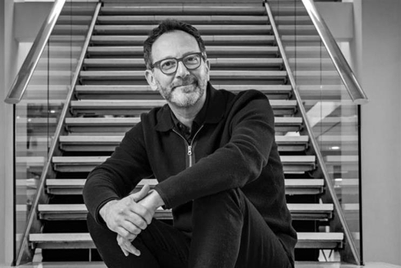
The way we see the world is changing. This shift is a result of two significant technology trends—the development and mass adoption of the smartphone and the socialisation of the internet. As smartphones have become an extension of ourselves we can now capture every important and irrelevant moment of our lives and through social media broadcast it instantly.
The ease with which imagery can be created and shared has had a profound effect on the human experience and, by extension, brand communication and the creative industry.
For starters, it has resulted in an eruption of imagery. Ten per cent of the total number of photographs ever taken were captured in the last 12 months. When it comes to distribution, a staggering 250 million images are uploaded to Facebook every day, with another 40 million appearing on Instagram.
This surge in photography is changing our perception of the world. What we’ve traditionally seen in the media—whether print, TV or movies—was defined by professionally shot content. But now the explosion of user-generated content being pushed out via multiple social networks means there is an almost limitless number of producers creating a broader view of the world. It is a world that is less perfect, not overly stylized. Instead we are seeing imagery emerge that is more diverse, authentic and intimate.
Authenticity is a wonderfully powerful means of communication. Take the famous Dove Campaign for Real Beauty, which abandoned images of near-perfect beauty models in favour of real women. This created a bond between Dove and its female audiences and showcased how brands can capitalise on the taste for honesty and the less-than-perfect in brand imagery.
The image has always been incredibly powerful but it has now also become an everyday form of communication. Look at Instagram; it has 150 million active monthly users communicating via still and moving imagery. Images not only stimulate communication but encourage participation (as the planking craze demonstrated), the development of communities and the powering of movements. The Obama 2012 re-election ‘For All’ campaign, for example, created a buzz online for a meaningful cause by asking Americans to write something that matters to them on their hand, take a picture and post it on social media.
Snapchat takes it a step further—it is all about participation in the moment, and has proven popular with the younger generation who interact with imagery as a temporary form of communication, rather than as a keepsake. This generation will grow up to be truly visually literate.
So what does this image overload mean for brands trying to communicate with customers who are fatigued when it comes to pictures?
New landscape for brands and creatives
Because of the number of participants in photography there has come about an interest in the wider view of the world when it comes to branding. Because we as creative professionals and our customers interact with imagery in our everyday lives, both at work and play, we no longer differentiate between the two.
Content producers are being drawn to imagery that was rarely used in branding six years ago. Imagery is no longer defined by whether it was professionally produced or not—it is about having a viewpoint and connecting with people as both customers and image producers themselves. Customers will forgive technical errors such as a lens flare, but they will not forgive badly posed, uncomfortable looking images. We are much more likely to street cast than use agency models these days. In fact, some of the coolest content is coming out of collaborations between supporters of a brand and the brand themselves, with brands issuing a call to action to their snap happy audiences, tapping into this new source of customer-generated creativity and driving brand engagement and loyalty in the process.
Creative collaboration
So, in this era of crowd-sourced creativity, where does the role of the creative lie?
Creatives have a unique ability to contextualise, conceptualise and contrast images to tell stories. Take the example of Airbnb crowdsourcing videos via Vine to create a short film about travel and adventure. It utilised user generated content, with Airbnb guiding its audience through directions posted on Twitter and finally curating the best Vines into a final video. It’s a great example of how collaboration can produce brand relevant and relatable visual content.
Creatives continue to have a vital role to play in visual brand storytelling—given a mountain of content they not only know how to interpret images, but how to play with them. As customers and contributors, we appreciate cleverness and playfulness when it comes to the use of visual content. It does not have to be a huge production, but it must be thoughtful and considered. In a world brimming with photographers and imagery, the creative is now the expert curator.
Rebecca Swift is head of creative planning at iStock, working to curate collections with the platform’s photographers, illustrators, videographers and composers. She runs global research projects, looking at the future of visual communication. She is one of the founding members of the Creative Research team at Getty Images.
The article first appeared on Campaignasia.com


.jpg&h=334&w=500&q=100&v=20250320&c=1)




.jpg&h=334&w=500&q=100&v=20250320&c=1)


.jpg&h=334&w=500&q=100&v=20250320&c=1)






.jpg&h=268&w=401&q=100&v=20250320&c=1)
.jpg&h=268&w=401&q=100&v=20250320&c=1)

